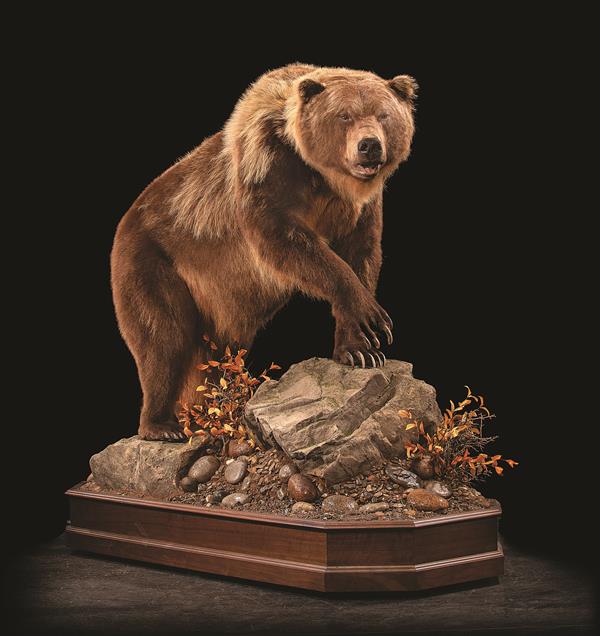
We flopped onto our cots at 1 a.m. after another 20+ hour day of trudging through tundra, swamps, and rivers. My guide asked me what time I planned to wake up for the last day of my grizzly hunt, and he chuckled when I said that we’d need to be up at 4:30 a.m. The last thing I heard him say was, “We’ll see.” Despite that chuckle, I knew Austin would be ready whenever I was.
True to form, we both rolled out of bed when my alarm rudely reminded us that it was the 11th hour of my hunt. Admittedly, we were moving a little slow in the gray light of early morning as we completed the routine of pack preparation and getting dressed. However, all of that changed when Austin glanced up at the river behind me and whispered, “There’s a big bear working up the river.”
Instinctively, I grabbed my rangefinder and bow and hopped our bear fence without a word exchanged between us. I started a brisk pace into the wind, paralleling the big boar on the opposite side of the river. While keeping tabs on him through the scattered willows, my mind was flooded with the typical thoughts that accompany the moment of truth. More than anything else, I remember feeling like that moment was surreal and not really happening.
Minutes later, I dropped my rangefinder to my chest after getting a range on a different bear that we bumped into while trying to close the gap on our initial target. If the morning had started surreal, it just took a turn for the truly unbelievable. When Austin whispered, “It’s definitely a boar,” in my ear, I went into autopilot. I’ll never forget what that giant bear looked like through my peep sight as I settled my 40-yard pin behind his shoulder. Before I knew it, the arrow was on its way and I watched the fletchings zip through him exactly where I wanted the arrow to hit. With a loud woof and an acrobatic spin, he was gone in seconds and I was left with the overwhelming sense that this was a moment I’d never forget.
After a substantial wait, we approached the location where we last saw the bear, and within 20 yards, Austin spotted a small patch of grizzly bear fur lying in the brush ahead of us. He had died less than 40 yards from where I had shot him. As I knelt next to him and ran my fingers through his hair, I was in awe. I had just killed one of the largest grizzlies that had ever been taken with archery equipment, and I had done so with someone by my side who is truly a ride or die friend and business partner. Again, I told myself this was a moment I’d never forget.
While it’s true that I’ll never forget a lot of details of that hunt, it’s also true that memories fade with time. Photos, video, and quality taxidermy are the best ways to capture those memories for life. A quality piece of taxidermy will make you smile and transport you back to the moment every time you see it. A poor piece of taxidermy will do just the opposite. Not only will it fail to transport you back to that special moment in time, but it will also leave a bad taste in your mouth that forever taints the experience you had. For that reason, it’s never worth settling for convenience or bargains when it comes to taxidermy.
As I mentioned in part one of this two-part article (August 2020), my grizzly bear had traveled about 5,000 miles by the time it landed in the capable hands of the taxidermists at Kanati. It was neither cheap nor convenient, but when I opened that crate and got my first look at the finished product, I was thrilled. I’ll be able to relive that hunt well into my rocking-chair years thanks to the lifelike recreation from Kanati.
For those who may not have read part one of this article, there are a few important tips I’d like to reiterate on how to successfully get your trophy from the field and into the hands of your selected wildlife artist:
| ADDITIONAL TRANSPORTATION COSTS TO NOT SETTLE FOR THE TAXIDERMIST NEXT DOOR | ||
| Item | Cost | Purpose |
| Rubbermaid Cooler | $67.95 | To ship grizzly cape to Kanati |
| UPS Next-Day Air | $554.39 | To pay for shipping to Kanati |
| Crate Freight | $952.00 | To ship finished bear to Cedar City, Utah |
| Total Additional Cost | $1,574.34 | To ensure my finished bear would exceed my expectations |